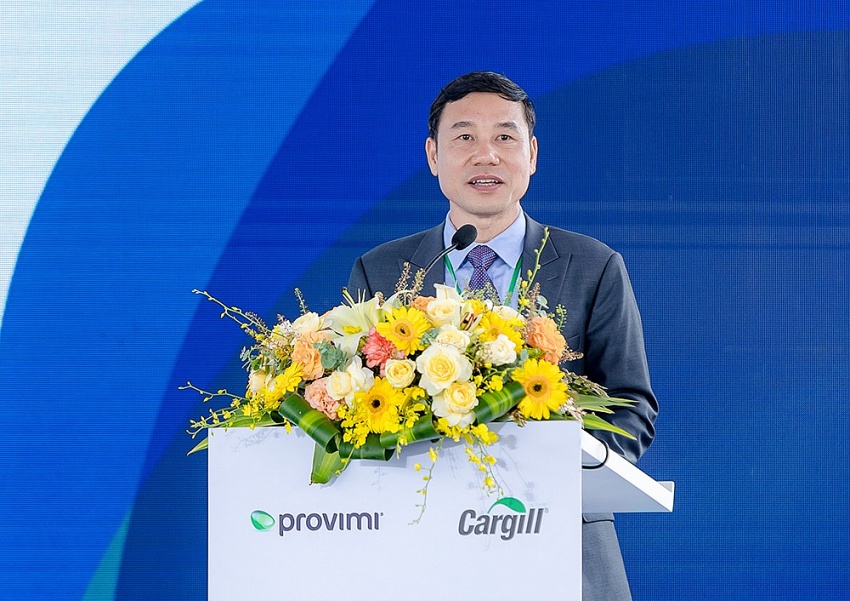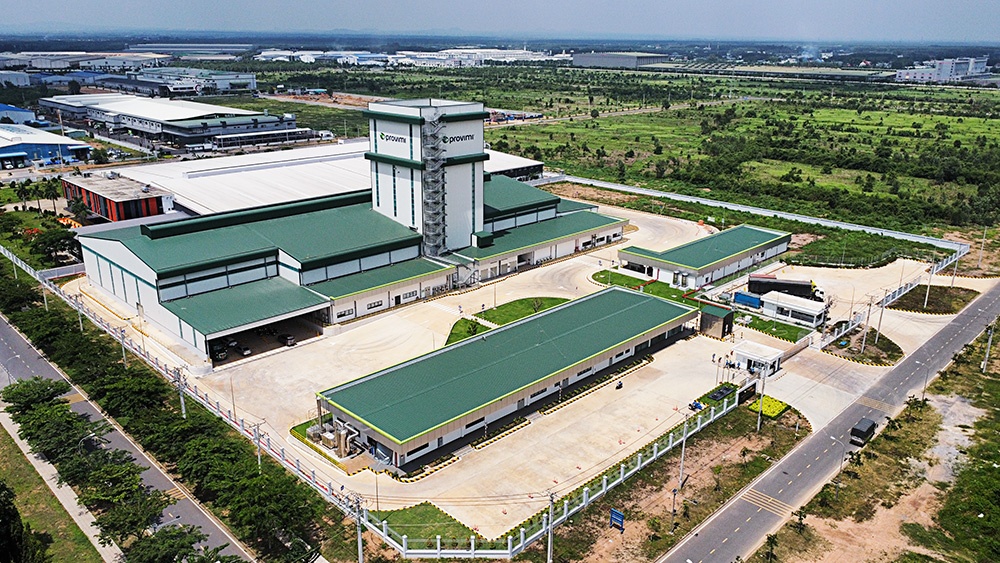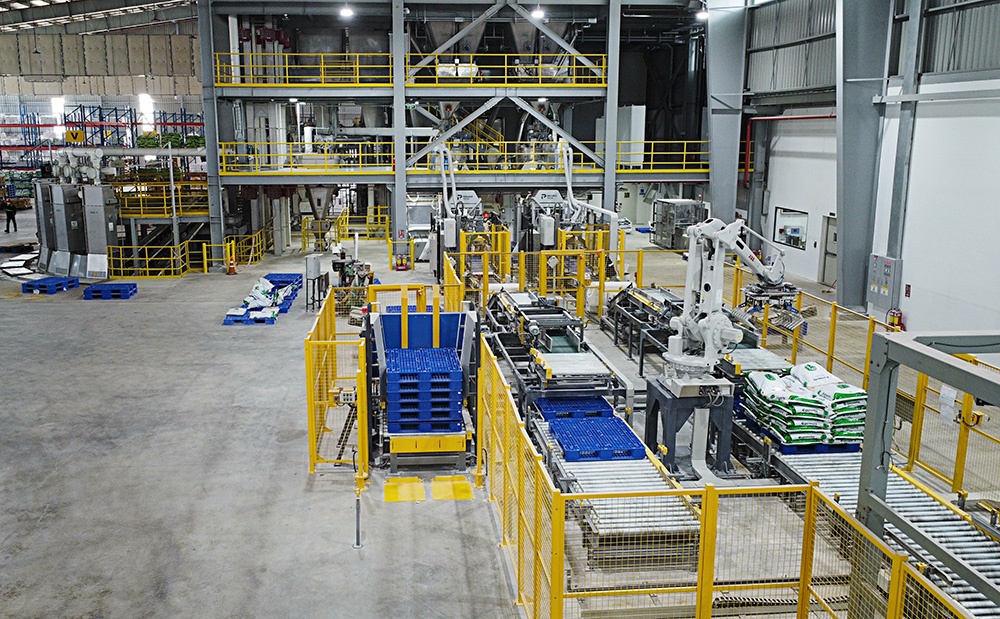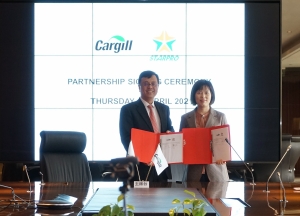Cargill’s new facility backs up next phase of growth
How important is this new Provimi plant to Cargill’s investment and business strategy in Vietnam?
Located in Dong Nai’s Trang Bom district in the southern province of Dong Nai, our $28 million Giang Dien plant represents a quantum leap forward from our previous facility in Bien Hoa, adding vastly improved technology and superior infrastructure, representing the best of Cargill premix facilities in Asia, and highlighting the company’s long-term commitment to Vietnam.
 |
| Duc Thang Pham, managing director of Cargill Animal Nutrition Thailand and Vietnam |
The new facility spans 30,000 square metres which is more than nine times the size of its 27-year-old predecessor, and the 40,000-tonne annual capacity represents a 100 per cent increase over the older plant. The significantly larger production and warehousing capacity of the new plant will add to Vietnam’s premix capabilities and self-sufficiency and enhance the precision and traceability of speciality micro-nutrient products.
Equipped with state-of-the-art technology, the new plant has an automation rate of over 95 per cent and this industry’s best technology brings an assurance of product quality and consistency for partners and customers.
The plant will produce animal nutrition products, ranging from low inclusion premixes to high-inclusion base mix which contains high inclusion nutrition tech - and other additives and speciality ingredients under the Provimi brand for multiple customer segments including farmers of livestock, aquaculture, and feed mills all over Vietnam, for now and the future business growth.
How much of the domestic and export market demands can this plant meet and what are the expectations for its future development?
In terms of available capacity for Vietnam and exports, the establishment of the plant primarily aims to serve the Vietnamese market. However, we also have ambitions to export to Asian markets including South Korea, Malaysia, Taiwan, Thailand, and Myanmar.
Based on our calculations, approximately 20 per cent of the capacity will cater to the demands from export markets, while the majority will serve domestic customers in Vietnam. This is a long-term process because the plant’s capacity is substantial, and there are no limitations on export capacity or serving Vietnam. Depending on the market situation, customers’ demands and development, we will gradually increase export volumes.
Cargill began planning for this plant over five years ago. It serves two main purposes: firstly, to replace the old Provimi plant in Bien Hoa city, which was out of capacity and no longer suitable as the surrounding areas have become increasingly urbanised.
Secondly, it involves a huge technological leap forward. The new plant aims to continue serving existing customers, transition, and eventually expand its customer base. The reason Cargill made such a substantial investment in this plant is that we recognised the potential and long-term growth of Vietnam’s livestock and aquaculture industries.
This initial step demonstrates our long-term commitment, with hopes that the plant will operate at full capacity in the near future.
 |
The construction of the new plant is rooted in the opportunities presented by the Vietnamese market. Could you elaborate on the specific aspects of this potential?
In the feed industry, there are two main production areas: of compound feed (pellets for animals to eat directly) and of nutritional products for the feed production sector. The new plant primarily focuses on producing specialised nutritional products, providing such input products as premixes, basemixes, additives to other feed mills, both in livestock and aquaculture.
The primary customer segments of this plant are feed mills, including those under Cargill, as well as other feed companies in the market.
The secondary customer segment is large farms, who may have the capacity to mix their own feed. To do so, they typically purchase basic macro ingredients like grains and core micronutrients. Most feed mills typically do not have the capability to produce these micronutrients components, so they must buy them from plants like ours.
Micronutrient ingredients are the core of compound feed production. For example, to produce compound feed containing 100 per cent raw materials, up to 70-80 per cent of the macro materials can be easily mixed in. However, the 20 per cent nutrient core, which includes micronutrients, additives, vitamins, and minerals, is much more challenging to produce. Therefore, the new plant is designed to produce these high quality, sophisticated specialty products and micronutrients.
For example, we have a product like Provisoy, which is special pre-processed soy to make it highly digestible for pigs, notably young animals. For feed mills, instead of mixing raw soybeans or soybean meal, they mix pre-cooked soybeans that have gone through a sophisticated processing system, which helps young animals digest them more easily and absorb the nutrients they need to grow and stay healthy.
 |
Could you elaborate more on Vietnam being a high-potential market, for example in the demand for animal feed?
In Vietnam’s livestock farming industry, about 20 million tonnes of compound feed will be needed every year. To produce that amount of compound feed, each tonne of products requires around 20 per cent core nutrients. And those 20 million tonnes will be divided among many feed mills.
However, quite a few larger farms will mix their own feed. It is predicted that each year, the volume of compound feed will grow by an additional 3-5 per cent, following the growth of economic development. Therefore, the compound feed market will continue to be a source of growth.
In addition, there’s an increasing demand for high-quality products, both feed and food. The requirements for nutrition and high technology in nutritional core are constantly increasing. Hence, this plant meets the requirements of our customers and consumers to address the factors mentioned above. In the past, mixing ingredients and nutrients was relatively simple, but as the need for high productivity, disease prevention and treatment, and antibiotic replacement has grown, new and sophisticated technologies are required.
By leveraging Cargill’s strengths in global innovation and nutritional core that can be adapted locally for domestic species, this new Provimi premix plant has all the relevant capabilities to produce products with such advanced technological content.
 | Cargill swells tapioca starch footprint in Asia Cargill is partnering with Starpro, the leading food grade tapioca starch producer in Thailand, to expand its speciality tapioca starch offerings in the Asia-Pacific region, supporting the product processing requirements of food manufacturers and meeting the sensory expectations of consumers. |
 | Cargill and CARE International partner to improve sustainable agriculture On November 8, Cargill and CARE International signed an MoU for a 2-year programme, She Thrives, at a ceremony held in Hanoi. |
 | Cargill Vietnam empowers excellence The workplace culture at Cargill Vietnam embodies the company's vision, mission, and values. These principles are woven into the fabric of the organisation. |
What the stars mean:
★ Poor ★ ★ Promising ★★★ Good ★★★★ Very good ★★★★★ Exceptional
Related Contents
Latest News
More News
- Businesses ramp up production as year-end orders surge (December 30, 2025 | 10:05)
- Vietjet chairwoman awarded Labour Hero title (December 29, 2025 | 13:06)
- How to unlock ESG value through green innovation (December 29, 2025 | 10:03)
- AI reshapes media and advertising industry (December 29, 2025 | 08:33)
- FPT and GELEX sign deal to develop blockchain tech for global markets (December 29, 2025 | 08:29)
- Vietnam’s GDP forecast to grow by 9 per cent in 2026 (December 29, 2025 | 08:29)
- Women entrepreneurs are key to Vietnam’s economic growth (December 29, 2025 | 08:00)
- Vietnam's top 500 value-creating enterprises announced (December 27, 2025 | 08:00)
- The PAN Group shaping a better future with ESG strategy (December 26, 2025 | 09:00)
- Masan Consumer officially lists on HSX, marking the next phase of value creation (December 25, 2025 | 13:20)

 Tag:
Tag:



















 Mobile Version
Mobile Version